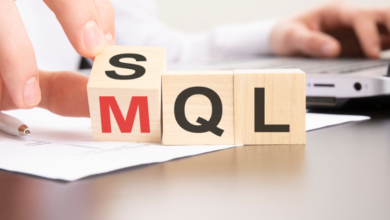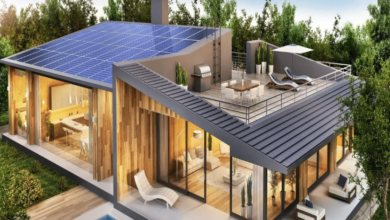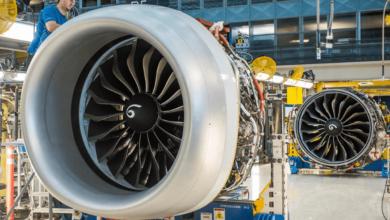Data Center 101: The Essential Elements for a High-Performing Facility

In today’s tech-driven world, data centers play a crucial role in storing, managing, and processing massive amounts of data. Whether it’s for cloud computing, corporate storage, or hosting services, a high-performing data center is foundational to the success of modern businesses. For companies looking to create or improve their data centers, understanding the essential elements is key to ensuring maximum performance, reliability, and security.
1. Location, Location, Location
The first and often most overlooked consideration in setting up a high-performing data center is its location. Choosing the right geographical area is critical for several reasons:
- Environmental Factors: The site must be in an area with minimal risk of natural disasters like earthquakes, floods, and hurricanes. Additionally, climate plays a role in cooling, as data centers generate a lot of heat, and external weather conditions can influence energy efficiency.
- Access to Power: Data centers require significant amounts of electricity to keep their systems running. Ideally, they should be located near reliable power sources or within reach of renewable energy sources, such as solar or wind power, for sustainable operation.
- Proximity to Users: Being close to the users or clients you are serving reduces latency. This is especially important for applications requiring real-time data processing.
See also: Key Techniques in Bookkeeping 9085339038
2. Redundant Power Systems
A high-performing data center cannot afford to have any downtime, even for a moment. Power failure can lead to significant losses and disruption to services. This is where redundancy comes into play. Critical power infrastructure must have backup systems in place, including:
- Uninterruptible Power Supply (UPS): This ensures that the data center stays operational for a short time when there is a power outage.
- Backup Generators: Diesel or natural gas-powered generators kick in if the UPS fails or when a prolonged outage occurs. These generators should be capable of sustaining the center’s energy needs until normal power is restored.
- Dual Power Feeds: Data centers should be connected to multiple independent power grids to mitigate the risk of total power failure.
Additionally, incorporating a three-phase power transformer into the infrastructure can improve the efficiency and reliability of power distribution. A three-phase transformer ensures a balanced load, minimizing the risk of overloads and maintaining a steady, reliable power supply to all critical systems. This is especially important in high-demand environments like data centers, where stability and efficiency are crucial.
3. Cooling Systems
Data centers are high-energy environments, and the equipment inside generates a lot of heat. Effective cooling systems are essential to maintain the temperature within an optimal range for the servers and other infrastructure. Overheating can cause hardware failure and data loss. Some essential cooling elements include:
- Air Conditioning Units: These provide general cooling for the data center, with many using a raised floor system to circulate cool air efficiently.
- Liquid Cooling Systems: More advanced than air conditioning, liquid cooling involves circulating coolant through pipes or heat exchangers attached to the hardware. These systems are especially useful for high-performance computing.
- Hot and Cold Aisle Containment: In high-density data centers, hot and cold aisle containment helps separate hot air from cold air to maintain efficient cooling.
4. Security Infrastructure
As data centers store and process sensitive information, security is one of the most vital aspects of a high-performing facility. Both physical and digital security measures need to be top-notch:
- Physical Security: The facility should have restricted access zones, where only authorized personnel are allowed entry. Biometric authentication, ID cards, and 24/7 surveillance are common practices.
- Fire Protection: Data centers require fire suppression systems to protect against electrical fires. Specialized systems, like gas-based fire suppression (FM-200 or Inergen), are preferred over traditional water-based sprinklers to avoid damaging delicate equipment.
- Cybersecurity: Data centers must implement firewalls, intrusion detection systems, and encryption to protect data from cyber threats. Regular security audits and updates are also crucial.
5. Scalability and Flexibility
The demand for data storage and processing power is continuously growing. A high-performing data center must be designed with scalability in mind. This means planning for both horizontal and vertical expansion:
- Modular Design: Modular data centers can be expanded incrementally, allowing businesses to scale their facilities according to their needs without major overhauls.
- Cloud Integration: Hybrid cloud solutions can offer scalability, as they enable businesses to offload some data or services to external providers when necessary.
6. Network Connectivity
A high-performing data center requires robust network infrastructure to facilitate quick data transfer and ensure connectivity. This includes:
- Redundant Network Paths: To avoid network failure, multiple, redundant network connections should be in place.
- High-Speed Internet: Fast internet speeds are crucial for ensuring that data can be transferred quickly and efficiently between the data center and end users.
- Interconnection: Data centers often require high-bandwidth connections to other facilities or third-party providers. Establishing direct connections with cloud service providers, for example, reduces latency.
7. Monitoring and Management Tools
Real-time monitoring and management tools are essential for maintaining a high-performing data center. These tools help administrators track various aspects of the facility, including:
- Environmental Monitoring: This involves tracking temperature, humidity, and airflow to prevent system failures caused by overheating or moisture.
- Power Usage Effectiveness (PUE): PUE measures the energy efficiency of a data center, comparing the total building energy usage to the energy used by the IT equipment alone. It helps identify areas for improvement in energy consumption.
- Automated Systems: Using automation for monitoring and adjusting the data center’s operations reduces human error and enhances efficiency.
8. Sustainability and Green Practices
As energy costs rise and environmental concerns grow, sustainable data center practices are becoming increasingly important. Implementing green practices not only improves efficiency but can also save costs in the long run:
- Energy-Efficient Hardware: Choosing energy-efficient servers, storage devices, and networking equipment reduces energy consumption and operating costs.
- Cooling Optimization: Implementing more efficient cooling methods, such as using free air cooling or liquid cooling, can significantly reduce energy use.
- Renewable Energy: Data centers powered by renewable energy sources help lower carbon footprints, contributing to a greener and more sustainable future.
In Conclusion
Designing and operating a high-performing data center requires a combination of thoughtful planning, investment in the right infrastructure, and ongoing maintenance. By focusing on essentials such as location, power redundancy, security, cooling, and scalability, businesses can ensure that their data centers are reliable, secure, and efficient—meeting both current demands and future needs.




